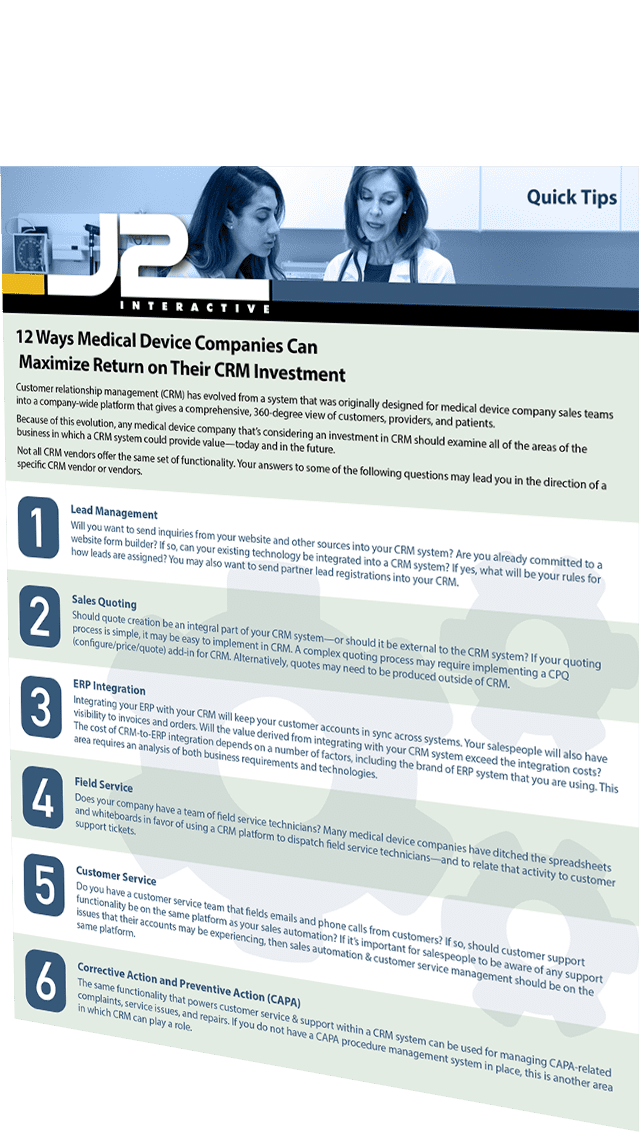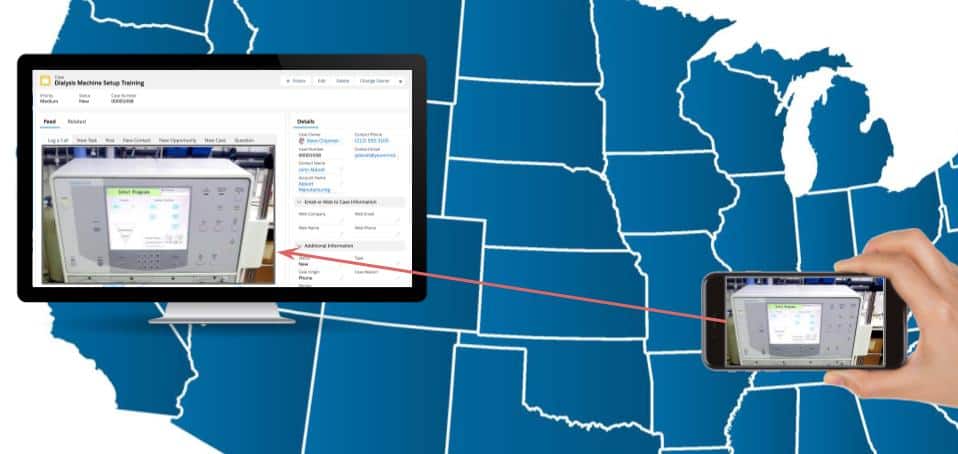
Until recently, most medical device training and support relied on pre-recorded or text-based materials, such as user manuals and recorded videos. Furthermore, end-user and caregiver customer support happened through email exchanges and voice-only telephone conversations.
In today’s world, technologies for remote visual support & training for patients and caregivers have been more widely adopted by medical device manufacturers than ever before. Distributors that provide customer service for the devices they resell have also adopted these technologies.
Two trends have contributed to this adoption:
- Vendors and consultants have integrated video interactions more tightly into customer support platforms
- Because of stay-at-home orders, many people have become a lot more comfortable using video technology
The use of remote visual support by medical device companies benefits both patients and caregivers. Speeding up issue resolution is particularly important in healthcare settings.
Caregiver training and support via video
Where does remote visual support come into play with caregivers at health systems, hospitals, and clinics?
Caregiver training on medical equipment usage
Caregivers can be trained remotely on the setup of certain types of equipment, such as a dialysis machine. This setup involves making a variety of tube connections and running a series of on-screen tests.
With video interaction, the caregiver can hold their mobile phone with one hand while the remote trainer directs them on connections and button pushes.
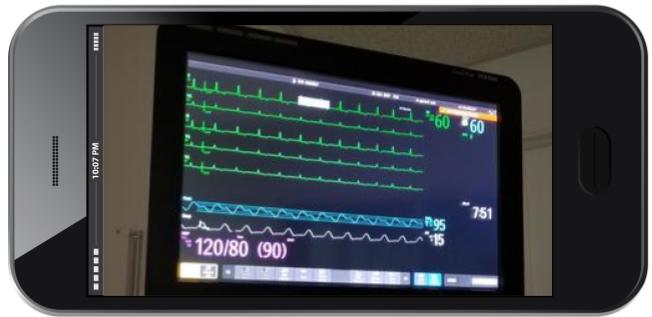
Remote troubleshooting of equipment issues
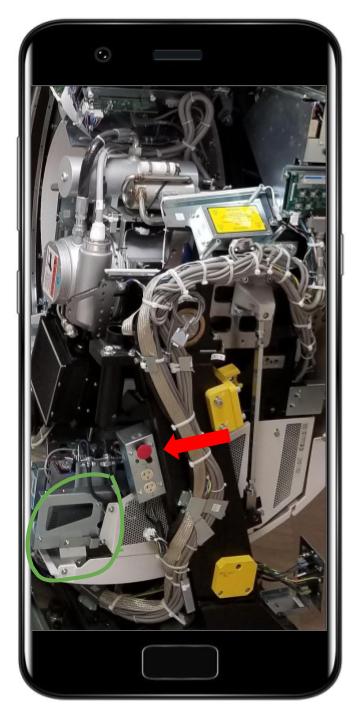 There are several types of medical equipment that can help a support technician see what the caregiver is seeing.
There are several types of medical equipment that can help a support technician see what the caregiver is seeing.
Vonage is an example of a vendor that offers tools for enabling remote visual support on any device, including iOS and Android. Because the vendor uses WebRTC (Web Realtime Communications), the user does not need to install any apps or plugins.
The user can point the back camera of an iOS or Android device at a section of the medical device to access the remote visual support tools. If they initiate a video interaction within a customer service ticket (as compared to a separate app), the issue resolution is more efficient, and the tech does not have to switch among applications. The ticket also logs the time and duration of the video interaction.
Remote assistance to field service technicians
Complex equipment, such as CT scanners and MRI machines, often require field service and repair. Field service techs sometimes need supplemental expertise from a resource who’s working at a fixed location.
Remote support via video can mean faster service completion time and fewer truck rolls to healthcare facilities.
Patient training, support, and feedback
Integrated video technology means easier access from a manufacturer’s service & clinical teams to end-users of the company’s devices.
Patient training on device usage
Educational materials often ship with medical devices, and manufacturers make online training videos available. Some patients prefer a manufacturer’s representative to assist in their first treatment with that medical device, though, a process that is usually conducted over the phone. In today’s world, this process is no longer as limited; a manufacturer representative can also use video communication to ensure proper device usage.
Support for patients with device issues
For device manufacturers that provide direct end-user support, being able to see what the patient is seeing reduces end-user frustration.
Smartphone-connected devices rely on Bluetooth connections. In the event of a Bluetooth connection issue, device screen sharing can be an important visual support capability. The support team can also direct the customer on how to initiate Bluetooth pairing during the same video session.
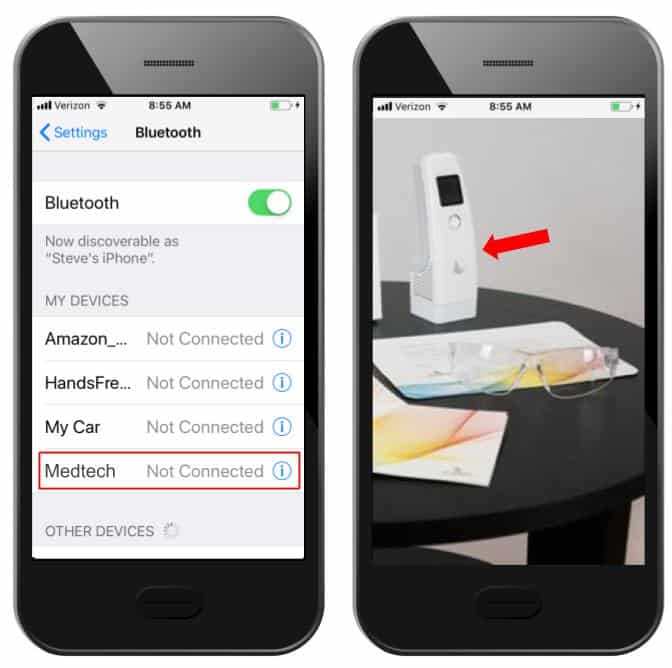
Patient feedback about devices
Beyond training and service, remote visual technology lets patients give direct feedback to device manufacturers’ clinical teams. An interactive video conversation yields better information than a feedback form.
Remote visual support platforms & software
Customer service software solutions, such as Salesforce Service Cloud, can also incorporate remote visual support. Many medical device manufacturers have already invested in Salesforce.
Salesforce is designed to let consultants like J2 Interactive seamlessly integrate third-party technology with its cloud platform. J2 has embedded Vonage’s interactive video technology within Salesforce Service Cloud at a number of customer locations.
The technology goes well beyond a video chat. Vendors can enhance issue resolution with features such as on-screen annotations and schematics. Plus, other images can be overlaid on a device screen to supplement the troubleshooting or training.
The future of remote visual support platforms & software
With the rise of the COVID-19 pandemic, telehealth has become more critical than ever before. Because of this shift in medical culture, technologies for remote visual support & training for patients and caregivers will only continue to grow and be adopted by medical device manufacturers at a rapid pace.
Free Guide for Health and Life Science Organizations
Learn 12 ways medical device companies can maximize return on their CRM investment
